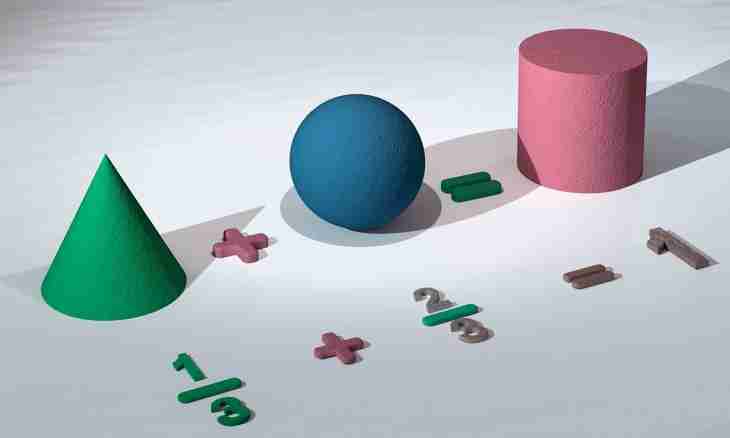The cylinder is a spatial figure and consists of two equal bases which represent circles and the side surface connecting the lines limiting the bases. To calculate the area of a cylinder, find the areas of all its surfaces and put them.
It is required to you
- ruler;
- calculator;
- concept of the area of a circle and length of a circle.
Instruction
1. Determine the area of the bases of a cylinder. For this purpose measure diameter of the basis by means of a ruler, then divide it into 2. It will be cylinder basis radius. Calculate the area of one basis. For this purpose square value of its radius and increase by a constant π, Skp = π ∙ R² where R is cylinder radius, and π ≈ 3.14.
2. Find the total area of two bases, proceeding from definition of a cylinder which says that its bases are equal among themselves. The area of the basis of the same social standing increase by 2, Sosn =2Skp =2 ∙π ∙ R².
3. Calculate the area of a side surface of a cylinder. For this purpose find length of a circle which limits one of the cylinder bases. If radius is already known, then calculate it, having increased number 2 on π and the radius of the basis of R, l = 2 ∙π ∙ R where l is basis circle length.
4. Measure length forming a cylinder which is equal to length of the piece connecting the corresponding points of the basis or their centers. H is in number equal to its height in a usual direct cylinder forming L. Calculate the area of a side surface of a cylinder, having increased length of its basis by the forming Sbok = 2 ∙π ∙ R∙L.
5. Calculate cylinder surface area, having summarized the area of the bases and a side surface. S=Sosn + Sbok. Having substituted formular values of surfaces, receive S=2 ∙π ∙ R²+2 ∙π ∙ R∙L, take out the general multipliers S=2 ∙π ∙ R ∙ (R+L). It will allow to calculate a cylinder surface by means of a uniform formula.
6. For example, diameter of the basis of a direct cylinder is 8 cm, and its height is equal to 10 cm. Determine the area of its side surface. Calculate cylinder radius. It is equal to R=8/2=4 cm. Forming a direct cylinder it is equal to its height, that is L=10 cm. For calculations use a uniform formula, it is more convenient. Then S=2 ∙π ∙ to R ∙ (R+L), substitute the corresponding numerical S=2∙3.14∙4 values ∙ (4+10)=351,68 cm².

